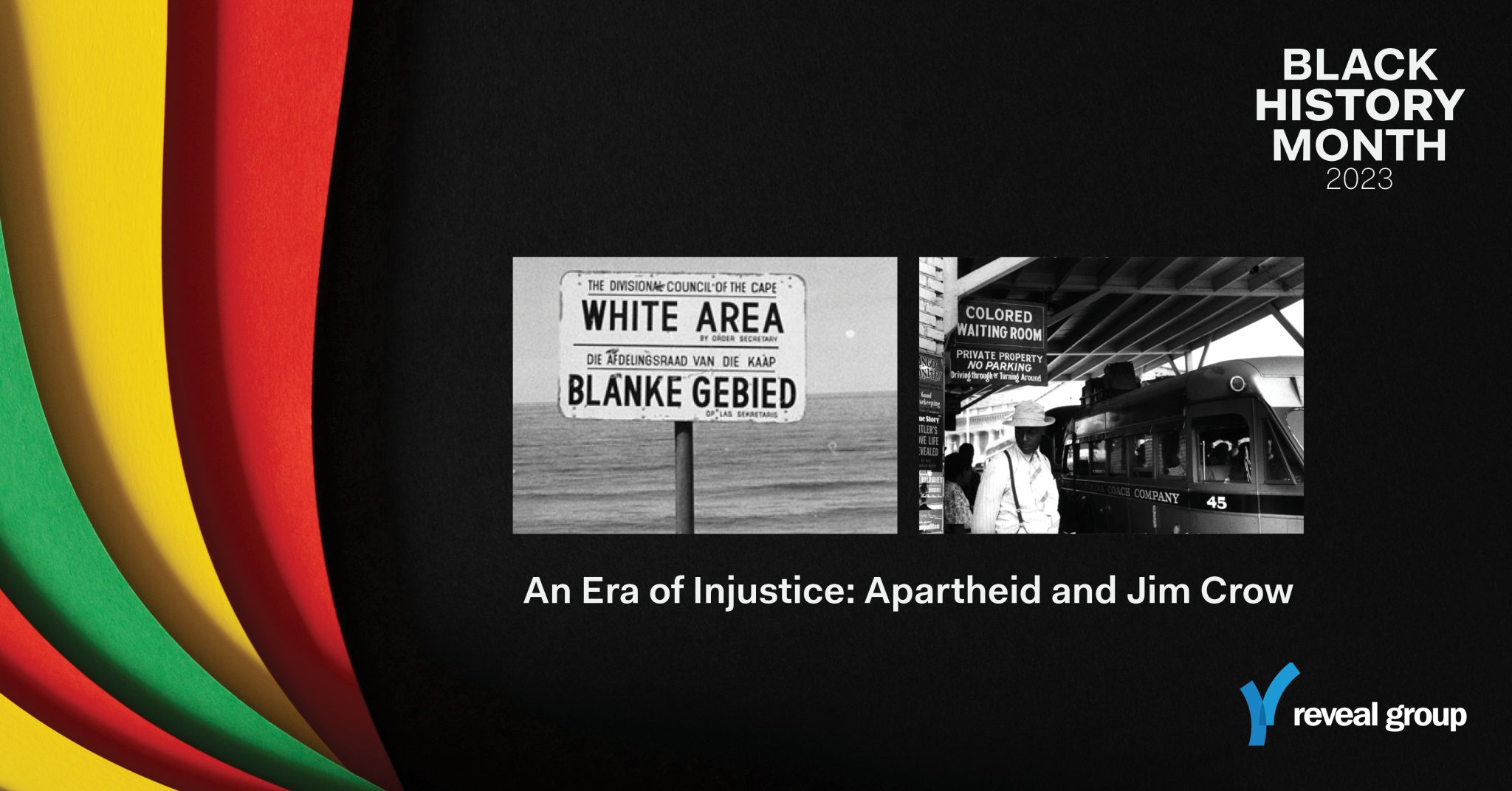
Black History Month 2023: An Era of Injustice – Apartheid and Jim Crow
Discrimination against Black people isn’t just an American issue; the suffering and discrimination of Black people have been seen in several countries worldwide. The Apartheid era in South Africa and the Jim Crow Era in the United States both involved systematic racial segregation and discrimination against non-white populations. Both systems created separate and unequal societies based on skin color, where people of color faced legal and institutional barriers to equal treatment and opportunities. Both regimes also used violence and repression to maintain their power and control over non-white populations. Let’s dive into the similarities between them and talk about what can be done as a society to educate each other on the past and push toward an inclusive future.
What was the Apartheid era in South Africa?
Apartheid was a system of racial segregation and discrimination that existed in South Africa from 1948 to the early 1990s. Under apartheid, people of different races were separated and treated differently under the law, with Black South Africans being stripped of their political rights and subjected to harsh treatment by the white-minority government. The apartheid regime was finally abolished in the early 1990s, after a long and often violent struggle by anti-apartheid activists and the international community.

What was the Jim Crow era in the American South?
The Jim Crow laws were state and local laws introduced in the Southern United States in the late 19th and early 20th centuries that enforced racial segregation, “Jim Crow” is a pejorative term for an African-American. Other areas of the United States were affected by formal and informal policies of segregation as well. Still, many states outside the South, beginning in the late 19th century, had adopted laws banning discrimination in public accommodations and voting. White Southern Democrat-dominated state legislatures enacted southern laws to disenfranchise and remove political and economic gains made by African Americans during the Reconstruction era. In 1964, President Lyndon B. Johnson signed the Civil Rights Act, which legally ended the segregation that Jim Crow laws had institutionalized.

What you can do to do your part!
The legacy of Jim Crow and Apartheid continues to effect society today, more than two decades after the official end of the system. There are several ways you can contribute to improving the lasting effects of racial segregation:
- Education: Educate yourself and others about historical racial segregation and its impact on your society. This helps raise awareness and promote understanding.
- Supporting organizations: Support organizations that work towards addressing the social and economic inequalities that persist because of discrimination.
- Advocating: Advocate for policies and initiatives that address the lasting effects of racial segregation, such as affordable housing, equal access to education and healthcare, and job creation programs.
- Promoting diversity and inclusion: Promote diversity and inclusion in your own community and workplace, and work to dismantle systems of oppression and discrimination.
Remember, long-term change takes time and sustained effort from many individuals and communities, so it’s important to stay engaged and continue working towards a more just and equitable future.


